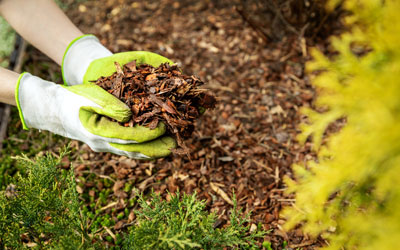 Termites are active right now, making it the best time to know what may attract them to your property. Damage caused by termites often goes unnoticed, as they can be tricky to spot until you have a serious infestation. For that reason, it’s important to do everything you can to prevent a termite problem from starting in the first place. The first step to preventing termites is to know what actions may be attracting them to your property to begin with. The team at Rentokil is here to share their expert info on actions that could be inviting termites to your home–read on to learn more.
Termites are active right now, making it the best time to know what may attract them to your property. Damage caused by termites often goes unnoticed, as they can be tricky to spot until you have a serious infestation. For that reason, it’s important to do everything you can to prevent a termite problem from starting in the first place. The first step to preventing termites is to know what actions may be attracting them to your property to begin with. The team at Rentokil is here to share their expert info on actions that could be inviting termites to your home–read on to learn more.
3 Things That May Attract Termites
- Firewood or wood piles: Many homeowners keep firewood stacked against their home or on the stoop for easy access. This is appealing to termites and can draw them toward a home and provide a point of entry. To avoid this, always store wood piles at least 20 feet away from the house, and 5 inches off the ground. Also avoid leaving stumps or logs in the yard, especially those that are in decay.
- Faulty or improper drainage: Moisture problems will attract subterranean termites, the most destructive species nationwide. Ensure you do not have any clogged gutters. Divert rainwater away from the foundation of your property with down-spout extenders.
- Mulch: Any mulch near your property could serve as a source of food for termites. Mulch retains moisture, which attracts termites. Try to minimize the usage of mulch or at least keep it 15 inches away from the foundation of your home or property.
Other Ways to Prevent Termites
In general, it’s best to get a regular inspection from a professional pest control company when you want to avoid termites. In addition, stay on top of home repairs: fix any damaged roofing, and seal any cracks or crevices in your property. Keep your garden neat, trim back trees and bushes away from the foundation of your home, and regularly inspect any outdoor furniture, porches, or decks.
Keeping Termites Away
Termites are the number one most destructive pest in the nation. For that reason, it’s essential for all homeowners in the Henderson area to stay proactive about preventative maintenance. For more information on what attracts termites to your home or how to prevent them, contact the termite exterminators at Rentokil today!
